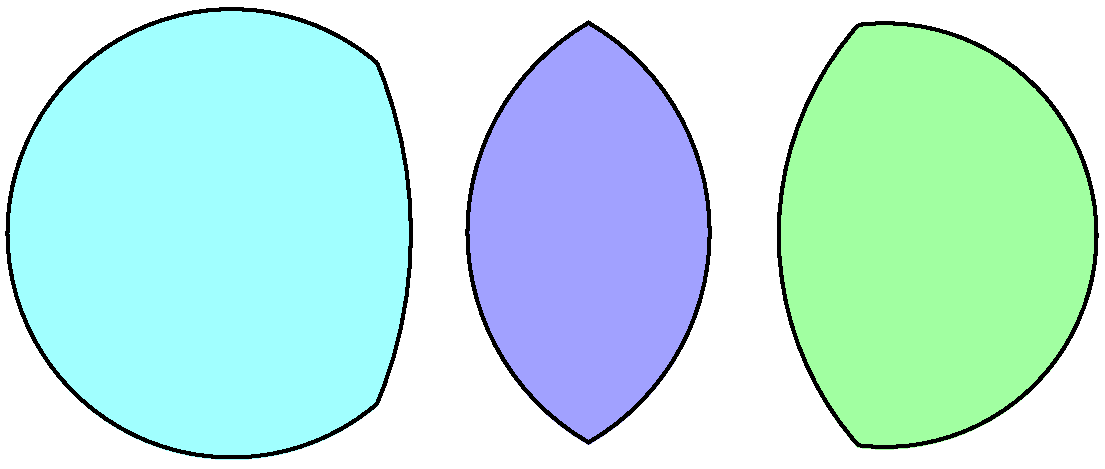In 2-dimensional
geometry
Geometry (; ) is, with arithmetic, one of the oldest branches of mathematics. It is concerned with properties of space such as the distance, shape, size, and relative position of figures. A mathematician who works in the field of geometry is c ...
, a lens is a
convex
Convex or convexity may refer to:
Science and technology
* Convex lens, in optics
Mathematics
* Convex set, containing the whole line segment that joins points
** Convex polygon, a polygon which encloses a convex set of points
** Convex polytop ...
region bounded by two
circular arcs joined to each other at their endpoints. In order for this shape to be convex, both arcs must bow outwards (convex-convex). This shape can be formed as the
intersection
In mathematics, the intersection of two or more objects is another object consisting of everything that is contained in all of the objects simultaneously. For example, in Euclidean geometry, when two lines in a plane are not parallel, thei ...
of two
circular disks. It can also be formed as the union of two
circular segment
In geometry, a circular segment (symbol: ), also known as a disk segment, is a region of a disk which is "cut off" from the rest of the disk by a secant or a chord. More formally, a circular segment is a region of two-dimensional space that is ...
s (regions between the
chord of a circle and the circle itself), joined along a common chord.
Types


If the two arcs of a lens have equal radius, it is called a symmetric lens, otherwise is an asymmetric lens.
The
vesica piscis is one form of a symmetric lens, formed by arcs of two circles whose centers each lie on the opposite arc. The arcs meet at angles of 120° at their endpoints.
Area
;Symmetric
The
area
Area is the quantity that expresses the extent of a region on the plane or on a curved surface. The area of a plane region or ''plane area'' refers to the area of a shape or planar lamina, while '' surface area'' refers to the area of an op ...
of a symmetric lens can be expressed in terms of the radius ''R'' and arc lengths ''θ'' in radians:
:
;Asymmetric
The area of an asymmetric lens formed from circles of radii ''R'' and ''r'' with distance ''d'' between their centers is
:
where
:
is the
area of a triangle with sides ''d'', ''r'', and ''R''.
The two circles overlap if

 If the two arcs of a lens have equal radius, it is called a symmetric lens, otherwise is an asymmetric lens.
The vesica piscis is one form of a symmetric lens, formed by arcs of two circles whose centers each lie on the opposite arc. The arcs meet at angles of 120° at their endpoints.
If the two arcs of a lens have equal radius, it is called a symmetric lens, otherwise is an asymmetric lens.
The vesica piscis is one form of a symmetric lens, formed by arcs of two circles whose centers each lie on the opposite arc. The arcs meet at angles of 120° at their endpoints.
